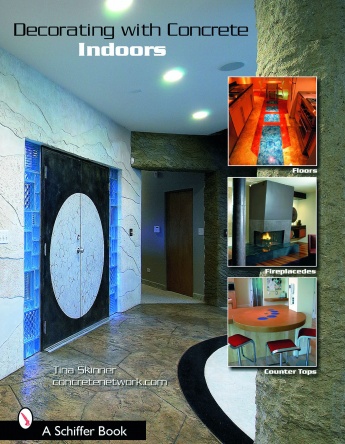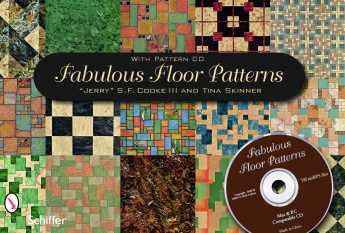LEED for Homes: Do Your Flooring Customers Need It?

Shaw’s Epic Plus engineered hardwood is both Greenguard and Cradle to Cradle certified.

Walnut floors, a part of Armstrong’s American Scrape collection, adorns this family room. The American Scrape collection feature more than 90 percent domestic content, according to the company.

USFloors’ Natural Bamboo Expressions line features strand woven bamboo in a glueless Drop and Lock installation profile.

Mohawk’s SmartStrand Silk Forever Clean carpet is made from recycled and bio-based products, which meets the requirements for the Environmentally Preferable Products credit in LEED for Homes.




The U.S. Green Building Council (USGBC) has been changing the way buildings and communities are designed, built and operated. Dedicated to a sustainable future through cost-efficient and energy-saving green buildings, USGBC created LEED (Leadership in Energy & Environmental Design) certification for professionals demonstrating knowledge in sustainable design, construction, operations and maintenance of buildings and communities.
While LEED certification has become second-nature in terms of commercial projects, it has still been mostly absent when it comes to homes. Homes are, arguably, the most important buildings in our lives, so transforming them to become more green is important—especially since LEED homes are built to provide clean indoor air and incorporate safe building materials.
The voluntary LEED for Homes rating system promotes the design and construction of high-performance green homes, including affordable housing, mass-production homes, custom designs, stand-alone single-family homes, duplexes and townhouses, suburban and urban apartments, and condominiums and lofts in historic buildings.
Blane Haywood, Shaw’s vice president of marketing and national accounts, acknowledges the challenges of greater LEED for Homes visibility among consumers. “The typical homeowner has relatively little understanding of the specifics of LEED. They may want a sustainable, green or environmentally friendly home, but what that means to them varies by individual. And they are more likely to focus on attributes such as energy efficiency or wanting safe, healthy products in their home rather than any one certification. That said, homeowners do value third-party certification to verify the claims that are being made.”
Is LEED for Homes Right for Your Customer?
“We really start off the conversation with talking about performance and making sure our customers get the right product for the right space,” said Armstrong Flooring’s sustainability manager, Amy Costello. “It’s so important they pick the right product because there’s nothing more unsustainable than having to take [the product] out and replace it because it wasn’t the right choice to begin with.”
She added that it’s important to direct customers to pick a product where the performance matches the customer’s needs, then talk about the sustainability aspects of the product and what is important to them from a sustainability standpoint.
Deborah Hardin, LEED AP and USFloors chief customer officer, noted, “At USFloors, account managers are trained to teach retail sales people to ask key qualifying questions such as, ‘Are you concerned about the environmental aspects of the flooring you choose?’ When they answer ‘yes,’ that opens up the conversation concerning LEED for Homes.”
It’s important to direct customers to pick a product where the performance matches the customer’s needs, then talk about the sustainability aspects of the product and what is important to them from a sustainability standpoint.
Haywood believes the best customer relationships are those in which the salesperson is genuinely striving to understand what the customer wants, what that individual values and how he or she prioritizes their decisions.
“That’s true whether it’s a manufacturer talking to a homebuilder or a homebuilder or retailer talking to a homeowner. Often the word sustainability might not even be used,” added Haywood. “A conversation with a homebuilder might begin with a discussion about wanting to create a high-quality home that sets them apart from the competition and puts them on par with, if not ahead of, what the market expects. It’s our job to educate the homebuilder about how our products can do that, to share with them what we’re hearing in the market and for them to be able to convey that value to the homeowner.”
On the other hand, some customers start the conversation themselves by approaching the business before they choose to sit down and discuss their options with them.
“Today we are often prompted by a consumer to share our recycling and sustainable practices,” remarked Chris Sy, vice president, contractor sales and development, Carlisle Wide Plank Floors. “Although we rarely find that people will pay more for such practices, they are certainly interested and concerned with how we handle everything from timber harvesting to waste elimination.”
Receiving LEED Certification
Each LEED rating system groups the requirements that address the unique needs of building and project types on their path towards LEED certification. Once a project team chooses a rating system (in this case, Homes), they’ll use the appropriate credits to guide design and operational decisions.
Each rating system is made up of a combination of credit categories. In the Homes rating system, the credit categories (Integrative Process, Location and Transportation, Materials and Resources, Water Efficiency, etc.), are specific prerequisites projects must satisfy along with a variety of credits projects can pursue to earn points. The number of points the project earns determines its level of LEED certification. Typical certification thresholds are Certified: 40-49 points; Silver: 50-59 points; Gold: 60-79 points; and Platinum: 80+ points.
“Essentially, all of our Mohawk products can contribute to LEED for Homes credits,” explained Rochelle Routman, vice president of sustainability, Mohawk. “All of Mohawk, both soft and hard surfaces, including pad/cushion and adhesives, contribute to the low emitting materials credit, due to the FloorScore and CRI’s Green Label Plus certifications.”
By installing water-resistant flooring, such as tile, Mohawk successfully contributes to the Durability credit. Additionally, its recycled and bio-based products, such as EverStrand carpet and SmartStrand, meet the requirements for the Environmentally Preferable Products credit.
“All of Armstrong’s flooring products have some contribution to LEED for Homes,” added Costello. “We have products that have up to 40% recycled content in them. All of our products, at least from a resilient standpoint, are FloorScore certified and low-emitting products. We also have low-emitting installation tools to install those same products.”
Some companies, such as USFloors, have built its business around the premise that it will bring unique and sustainable floors to the market. “Our wide variety of cork, bamboo, natural oiled floors and COREtec products represent the largest selection of floors that qualify for LEED for Homes credits,” stated Hardin. “As leaders in this arena, we pride ourselves in helping to educate both retail salespeople and consumers on the benefits of sustainable flooring.”
While the exact credit requirements vary depending on the version of LEED for Homes being used—V3-2008 or V4—Shaw also offers a wide range of flooring products that contribute to LEED for Homes and other rating systems. “Carpet and hard surface flooring products, including underlayment pads, can contribute to the LEED for Homes Low Emitting Products credit if they achieve indoor air quality certifications such as Green Label Plus, Greenguard or FloorScore,” Haywood said. “Installation adhesives that meet low VOC content requirements can contribute to the credit system. Flooring products can also contribute to the Environmentally Preferred Products (EPP) credit for things like recycled content, bio-based content and Cradle to Cradle certification.”
As far as homebuyers are concerned, their LEED for Homes knowledge is still very limited. “Most of the time, they [consumers] are educated about how their home will be built to LEED standards by the homebuilder. In that process, they are communicated what products would contribute and which ones they can select from to achieve the most points,” Routman noted.
According to Sy, “Consumers should be more concerned with their eco-footprint based on their water consumption and energy usage.” Going green benefits the consumer in the long-run and also saves money.
Added Haywood, “There are other green building programs that are more regional in scope when it comes to residential homes—with varying degrees of awareness. The best approach is to focus more on the customer’s priorities and the benefits of sustainable homes and products, showcasing how they help create intrinsically better homes.”
For more information, visit usgbc.com.
Looking for a reprint of this article?
From high-res PDFs to custom plaques, order your copy today!













